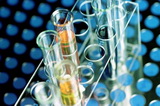Currently, industry and science are striving, though often not hard enough, to develop alternatives to petroleum-based chemicals in variety of applications, which makes the essence of the so-called green chemistry. D-limonene, a valuable byproduct originated during the processing of citrus juices and cold-pressed oils, is a good example of how a renewable and naturally occurring, but often dumped in great volumes every year, substance can, to some extent, act as a substitute for toluene and other petroleum-derived chemicals.
D-limonene, which belongs to the class of terpenes, occurs in many plants and bushes, like citrus fruits, dill, caraway, fennel, celery, bay, etc. [see WHO and IARC (1993) on limonene occurrence]. Kerton and Marriott (2013) call D-limonene a ‘slot-in’ replacement for toluene, acetone and many chlorinated solvents, which hardly sounds as a permanent solution. Applied in cosmetics, perfumery, chemicals (e.g. solvents, degreasing agents, paints, etc), medicine (e.g. para-pharmaceutical products), food and beverage industry (e.g. flavouring agents), agriculture (e.g. insecticide), the petroleum industry (e.g. in oil-rig cleaning) and other areas, D-limonene has a number of strengths and limitations. First and foremost, it is valued for its natural and biodegradable capacity, which is instrumental in reducing environmental risks and combating health hazards.
However, some studies note D-limonene’s ability to induce minor allergic reactions and skin irritations, as well as to cause damage to the kidneys and renal tumours in male rats, while there is also an indication that limonene shows acute toxicity to fish and Daphnia (WHO, 1998). In general, D-limonene could be considered (with the exception of its irritative and sensitizing properties) to be a chemical with fairly low toxicity (WHO, 1998) and easily biodegradable under aerobic conditions. It is also classified as noncarcinogenic and nonmutagenic (Kerton and Marriott, 2013), which is particularly vital in food production. This comes true especially when D-limonene stands a test against such substances as toluene or methylene chloride.
D-limonene features fairly high solvency strength for cleaning and degreasing purposes among other industrial solvents. Its Kauri-butanol (K-B) value is 67. Despite criticism of applicability and practicality of the K-B scale (Durkee II, 2014: 39), this parameter might assist in comparing different solvents. To this extent, D-limonene’s K-B value is quite decent even against such powerful solvents as methylene chloride (136), trichloroethylene (130), benzene (105), toluene (103, which is often used as a solvency strength reference point) or xylene (83) (Durkee II, 2014: 38). Kerton and Marriott (2013) argue that D-limonene strengths, among others, include its noncaustic and relatively inert character, price competitiveness with traditional solvents (food-grade limonene is twice the price of hexane), and capacity to be bio-sourced from a range of feedstocks. However, these bio-sourced feedstocks of D-limonene make it strongly prone to price fluctuations as they are susceptible to countless weather and other natural issues, often intermingled with geographically-driven economic, environmental and political specifics.
Nevertheless, feedstock potential is also enormous as, for example, only orange production was 68 million tons in 2014, while 40–60% of oranges were processed for juice production, of which 50–60% (15-25 mln tonnes) ended up as solid waste including seed, peel, and segment membrane (Wikandari et al, 2015).
D-limonene has also some other properties which may be advantageous in various industrial processes (Kerton and Marriott, 2013; Li, Fabiano-Tixier and Chemat, 2014). For example, when compared with toluene, D-limonene has high boiling point – 178°C vs 110°C or relatively low vapour pressure – 0.19kPa vs 3.8 kPa. One has to remember that at certain conditions, advantages may turn into drawbacks and limitations. Whenever the issue of substitution is raised, there are multiple barriers and pitfalls on the way to this process. According to Prof. David Gibbs of the University of Hull (UK), major impediments for businesses and industries to embrace greener solutions are prevalent regulatory uncertainty and current economic realities. Worldwide annual production of D-limonene is over 70,000 tonnes (Kerton and Marriott, 2013), and it is made by fairly small manufacturers. For comparison, toluene production volume in 2014 was 14.8 million tonnes, and it is manufactured by various chemical and petrochemical giants, like ExxonMobil Chemical Co, SK Energy, BP, Formosa Chemicals and Fibre Corp (FCFC), Shell, to name only a few. So, when the toluene-to-D-limonene replacement in specific applications is discussed, such words as ‘substitutes’ and ‘alternatives’ have been so far used figuratively rather than in their full sense, since real substitution will require fundamental behavioural changes, paradigm shifts, huge regulatory efforts and alteration in business patterns. To be a real alternative to petroleum-based chemicals, D-limonene has to provide a delicate balance between resource (energy) consumption, production costs, yields, performance, and safety for environment and humans (this feature is where D-limonene strength mainly rests), and its choice has to be supported by proper regulatory efforts and understanding of all compromises involved.
